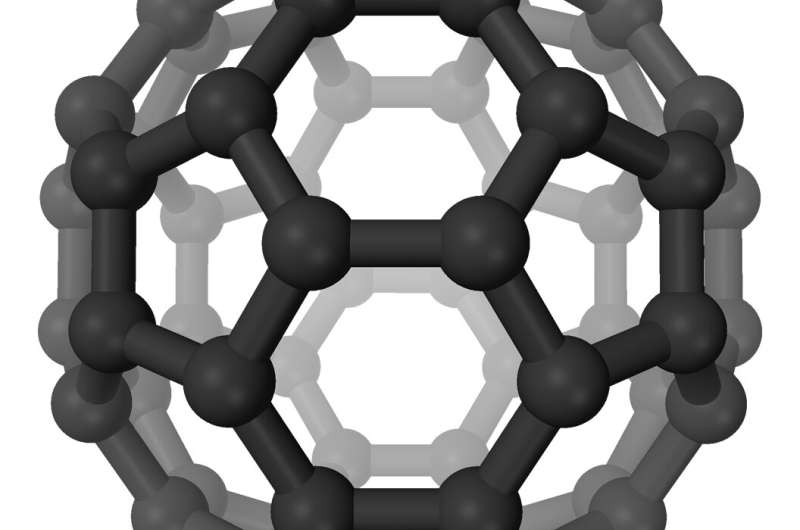Buckyballs release electron-positron pairs in forward directions

When electrons collide with positrons, their antimatter counterparts, unstable pairs can form in which both types of particle orbit around each other. Named 'positronium,' physicists have now produced this intriguing structure using a diverse range of positron targets—from atomic gases to metal films. However, they have yet to achieve the same result from vapours of nanoparticles, whose unique properties are influenced by the 'gases' of free electrons they contain in well-defined, nanoscopic regions.
In new research published in EPJ D, Paul-Antoine Hervieux at the University of Strasbourg, France and Himadri Chakraborty at Northwest Missouri State University, USA, reveal the characteristics of positronium formation within football-shaped nanoparticles, C60, for the first time. At specific positron impact energies, they show that positronium emission dominates in the same direction as the incoming antiparticles.
Commonly known as buckminsterfullerene, or 'buckyballs,' C60 is stable, easily synthesised and sustainable at room temperatures. Thanks to these useful properties, Hervieux and Chakraborty's findings could have important implications for fields including astrophysics, materials physics, and pharmaceutical research. In particular, they could offer improvements in tests of how antimatter responds to gravity, which can involve structures including dipositronium and antihydrogen atoms; each of which feature positronium in the first steps of their fabrication processes.
When positrons of certain energies approach buckyballs at angles of up to 10 degrees, the physicists showed that a series of narrow, forward-facing positronium signals resulted from the 'diffraction resonance' of the particles. The effect is comparable to how light is diffracted by microscopic spherical obstructions; showing variation with larger fullerene molecules like C240, and when particles are excited to higher energy levels. Hervieux and Chakraborty modelled these properties through theoretical calculations of how diffraction resonance affected the angles over which positronium is emitted, as a function of positron impact energy. Their results offer important insights for the wide variety of researchers who use these short-lived structures. In future studies, the duo now hopes to further explore their potential for use in real experiments.
More information: Paul-Antoine Hervieux et al, Strongly resolved diffraction resonances in positronium formation from C60 in forward direction, The European Physical Journal D (2019). DOI: 10.1140/epjd/e2019-100552-2
Journal information: European Physical Journal D
Provided by Springer




















